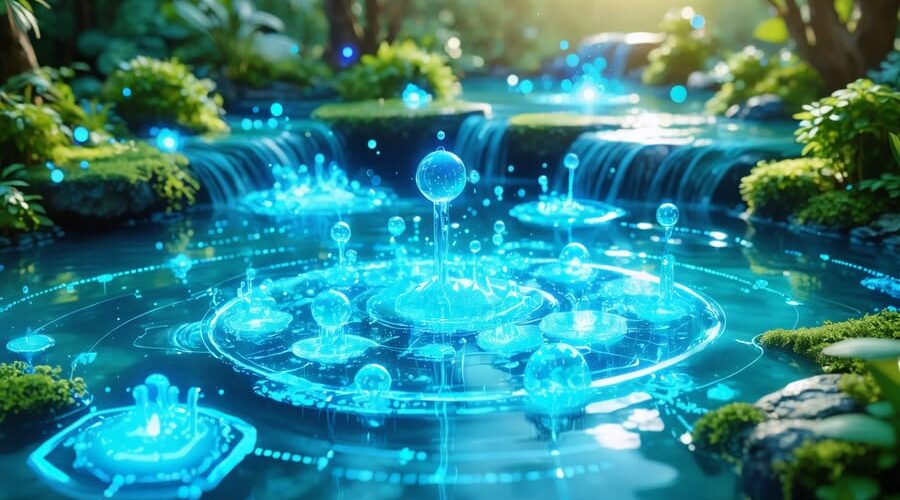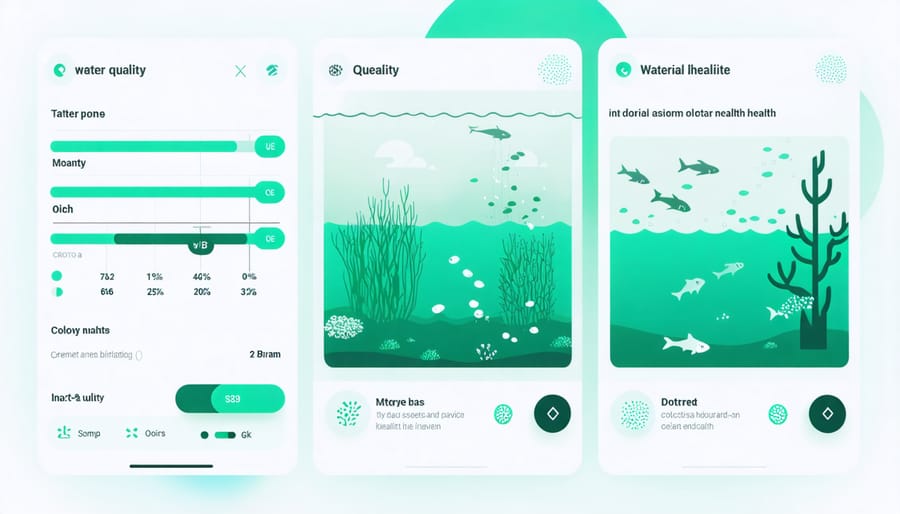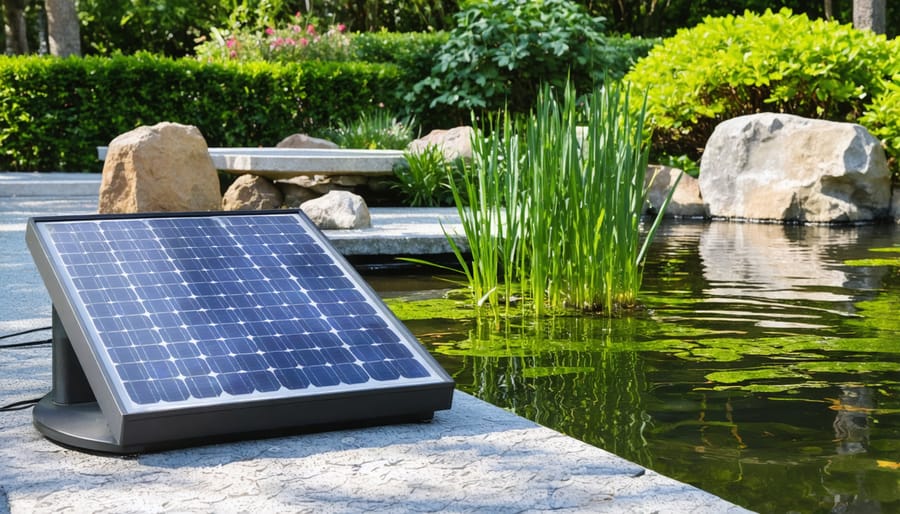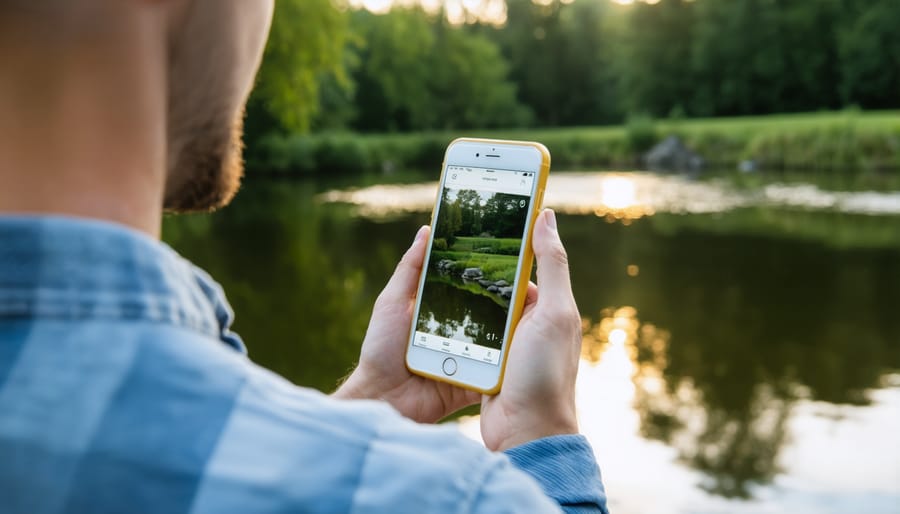
These Smart Pond Filters Are Revolutionizing Backyard Water Gardens
Revolutionary advances in smart water technology are transforming how we handle wastewater treatment in our ponds and water gardens. Cutting-edge membrane filtration systems now remove pollutants at the microscopic level, while using 40% less energy than traditional methods. Automated monitoring systems equipped with AI can detect water quality issues before they become visible, adjusting treatment parameters in real-time. Nature-inspired solutions, like engineered wetlands and biofilms, harness beneficial bacteria to break down waste more efficiently than ever before.
For pond enthusiasts and DIY gardeners, these innovations mean cleaner water, healthier aquatic life, and significantly less maintenance time. Modern treatment systems can be seamlessly integrated into existing setups, offering plug-and-play solutions that work with your current equipment. Whether you’re managing a small backyard pond or a larger water feature, today’s treatment technologies make it easier than ever to maintain crystal-clear water while being mindful of environmental impact and energy consumption.
These advancements not only improve water quality but also help conserve resources, making sustainable water management accessible to every gardener.
Smart Biological Filtration Systems
Self-Adapting Bacteria Colonies
Modern wastewater treatment systems are getting smarter thanks to self-adapting bacteria colonies that practically manage themselves. These helpful microorganisms work like tiny cleanup crews, breaking down waste and keeping your water crystal clear. But what makes today’s systems special is how they monitor and adjust these bacterial populations automatically.
Think of it as having a microscopic garden that tends itself. Smart sensors constantly check water conditions like temperature, oxygen levels, and nutrient content. When they detect changes, the system automatically adjusts air flow, food supply, or other factors to keep the bacterial colonies thriving.
For example, if the sensors notice a sudden increase in organic waste (maybe after a big rainstorm), they’ll boost oxygen levels to help the bacteria work harder. During quieter periods, the system scales back resources to maintain just the right amount of helpful bacteria – no waste, no shortage.
The really cool part is how these systems learn over time. They remember seasonal patterns and can predict when they’ll need more or fewer bacteria. Some advanced systems even use artificial intelligence to fine-tune their responses, making them more efficient with each passing month.
For us pond enthusiasts, this means less time worrying about chemical balances and more time enjoying our water features. The bacteria do all the heavy lifting while the smart system keeps everything in perfect harmony.
Real-Time Water Quality Monitoring
Gone are the days of guessing when your pond needs attention. Modern sensor technology has revolutionized how we monitor and maintain water quality in our backyard water features. These smart sensors act like vigilant guardians, constantly checking multiple parameters to help prevent water quality issues before they become serious problems.
Think of these sensors as your pond’s personal health monitors. They track essential factors like pH levels, dissolved oxygen, temperature, and nutrient content in real-time. What makes this technology truly exciting is how it connects to your smartphone, sending instant alerts when something needs attention. No more weekly testing with complicated kits!
The real magic happens in how these systems respond to changes. When the sensors detect a parameter drifting out of the ideal range, they can automatically adjust filtration rates or activate specific treatment systems. For example, if ammonia levels start creeping up, the system might increase biological filtration or trigger additional aeration.
For us pond enthusiasts, this means more time enjoying our water gardens and less time worrying about maintenance. The technology is surprisingly user-friendly – most systems come with simple apps that display readings in easy-to-understand graphs and provide maintenance recommendations in plain English. It’s like having a professional pond keeper watching over your water feature 24/7!


Solar-Powered UV Clarification
Energy-Efficient Design
Modern UV systems have revolutionized wastewater treatment with their energy-smart design. These new systems use advanced LED technology instead of traditional mercury lamps, cutting power consumption by up to 70% while delivering better results. What’s exciting for pond owners is how these systems help maintain healthy pond ecosystems without breaking the bank on electricity bills.
The secret lies in their smart sensor technology. Unlike older systems that run at full power constantly, new UV units adjust their output based on water clarity and flow rate. Think of it like having a dimmer switch for your pond treatment – it uses just enough power to get the job done, nothing more.
These systems also last longer, typically 50,000 hours compared to the 8,000-hour lifespan of traditional UV lamps. Plus, they warm up instantly, unlike older models that needed warming time. The compact design means they take up less space in your pump house or filtration area, and some models even include solar-powered options for the eco-conscious gardener.
For DIY pond keepers, these energy-efficient systems are a game-changer, offering better water quality while keeping running costs manageable.
Smart Scheduling Features
One of the most exciting advancements in wastewater treatment is the integration of smart scheduling systems that work in harmony with nature. These intelligent systems use sensors to monitor sunlight levels and water conditions, automatically adjusting treatment cycles for optimal efficiency. Think of it as having a smart thermostat for your water treatment system!
The technology works by tracking multiple parameters simultaneously. Light sensors measure the intensity and duration of sunlight, which is crucial for natural UV treatment and algae control. Meanwhile, water quality sensors monitor parameters like pH, temperature, and oxygen levels. Based on this data, the system automatically schedules treatment cycles during the most effective times of day.
For example, during peak sunlight hours, the system might reduce chemical treatment since natural UV rays are helping with disinfection. During cloudy periods or at night, it can automatically increase treatment intensity to maintain water quality. The system also learns from historical data, adapting its schedule to seasonal changes and weather patterns.
This smart automation not only improves treatment effectiveness but also reduces energy consumption and chemical usage. For homeowners, it means less time spent on manual adjustments and more confidence in maintaining consistently clean water.
App-Connected Monitoring Systems
Remote Management Features
Gone are the days of rushing home to check on your pond’s water quality. Modern wastewater treatment systems now come with smart features that put control right at your fingertips. Using your smartphone, you can monitor everything from pH levels to filter performance through user-friendly apps.
These remote management systems typically include wireless sensors that float in your pond or attach to your filtration equipment. They continuously collect data about water quality, temperature, and equipment status, sending real-time updates to your phone. If something needs attention, you’ll receive instant notifications before small issues become big problems.
Many apps let you adjust pump speeds, UV clarifier intensity, and feeding schedules with simple taps. Some even learn from your pond’s patterns, automatically adjusting treatment levels based on weather conditions or seasonal changes. The best part? You can check on your pond’s health while you’re at work or even on vacation.
Setting up these smart features is surprisingly straightforward. Most systems come with step-by-step guidance through their apps, and many manufacturers offer video tutorials for installation. While the initial cost might be higher than traditional equipment, the peace of mind and reduced maintenance time make it a worthwhile investment for many pond owners.
Remember to keep your app and system firmware updated to ensure you’re getting the most accurate readings and newest features. With these tools, maintaining perfect water quality has never been more convenient.

Predictive Maintenance Alerts
Imagine getting a text message from your pond telling you it needs attention before any problems occur! That’s exactly what modern predictive maintenance systems do for water treatment. These smart systems use artificial intelligence to monitor your water quality 24/7, giving you peace of mind and helping prevent those dreaded algae blooms or pH crashes.
These clever AI systems work by collecting data from various sensors in your pond or water feature. They track important measurements like pH levels, temperature, dissolved oxygen, and nutrient content. But here’s the really cool part – they don’t just collect this information, they learn from it! The AI analyzes patterns and can predict when something might go wrong before it actually happens.
For example, if the system notices that your ammonia levels typically spike after heavy rainfall, it’ll send you an alert before the next forecasted storm, suggesting you add beneficial bacteria or adjust your filtration. It’s like having a super-knowledgeable pond expert watching your water garden all the time!
Many of these systems come with user-friendly apps that send notifications straight to your phone. You’ll get easy-to-understand alerts like “Add beneficial bacteria within 48 hours” or “Check filter media next week.” Some advanced systems can even automatically adjust treatment dosing or activate backup systems when needed.
The best part? These predictive systems help you save money by preventing major problems and reducing unnecessary chemical treatments. They’re truly changing the game for water gardening enthusiasts!
DIY Installation Tips
System Selection Guide
Choosing the right wastewater treatment technology for your pond doesn’t have to be complicated. Start by measuring your pond’s volume (length x width x average depth) to determine the treatment capacity you’ll need. For small ponds under 1,000 gallons, compact biological filters or UV clarifiers are usually sufficient. Medium-sized ponds (1,000-5,000 gallons) benefit from combination systems that include both mechanical and biological filtration.
Consider your pond’s primary purpose. If you keep koi or other sensitive fish, opt for systems with advanced biological filtration and regular water testing capabilities. For decorative ponds, simpler systems focused on clarity and algae control might suffice.
Climate plays a crucial role too. In warmer regions, choose systems with higher oxygenation capabilities to combat increased bacterial growth. For colder areas, look for technologies that maintain efficiency at lower temperatures.
Your maintenance preferences matter. While automated systems cost more initially, they save time and effort in the long run. Manual systems are more budget-friendly but require regular attention. Also consider available space – some modern systems are compact and can be disguised within your landscaping.
Remember to factor in running costs. Energy-efficient technologies might have higher upfront costs but will save money over time. Look for systems with variable speed pumps and smart controls that adjust treatment levels based on actual needs.
Integration with Existing Systems
Integrating new wastewater treatment technology into your existing system doesn’t have to be complicated. The key is to take a step-by-step approach to upgrade your water garden while maintaining its current functionality.
Start by assessing your current filtration setup. Take note of your pump capacity, filter size, and plumbing configuration. This information will help you determine which new components can be added without causing compatibility issues.
Most modern filtration systems are designed to work alongside existing equipment. Begin by installing a pre-filter attachment to your current pump – this simple addition can significantly reduce maintenance needs. Next, consider adding a UV clarifier inline with your existing piping to combat algae growth.
For biological filtration upgrades, you can introduce new media gradually. Replace about 25% of your current filter media with modern alternatives like ceramic rings or bio-balls every few weeks. This method prevents disrupting the beneficial bacteria colony while improving filtration efficiency.
Smart controllers can be added to automate your system without replacing core components. These devices can monitor water quality and adjust flow rates automatically, making maintenance much easier.
Remember to keep your old system running while installing new components. This approach ensures continuous filtration and helps preserve the biological balance in your pond during the transition.
The rapid advancement of wastewater treatment technology brings exciting possibilities for both home gardeners and larger-scale applications. These innovations not only make water management more efficient but also more environmentally friendly and cost-effective in the long run. By incorporating smart sensors, biological treatments, and advanced filtration systems, we can maintain cleaner, healthier water while reducing our environmental impact.
The benefits of these new technologies are clear: reduced maintenance time, improved water quality, lower operating costs, and a smaller environmental footprint. For pond enthusiasts and homeowners, this means more time enjoying their water features and less time worrying about maintenance. The integration of smartphone apps and automated systems has made monitoring and adjusting water parameters easier than ever before.
Looking ahead, we can expect even more exciting developments in wastewater treatment. Research is ongoing into nanomaterials for enhanced filtration, artificial intelligence for predictive maintenance, and more efficient biological treatment methods. These innovations will likely become more accessible and affordable for home use in the coming years.
For those considering upgrading their current systems, the initial investment in new technology often pays for itself through reduced energy costs and maintenance requirements. Whether you’re managing a small garden pond or a larger water feature, these advances in wastewater treatment technology offer practical solutions for cleaner, healthier water.
As we continue to face environmental challenges and water conservation becomes increasingly important, these technological innovations will play a crucial role in sustainable water management. By embracing these new solutions, we can all contribute to a more sustainable future while enjoying the benefits of efficient water treatment in our own backyards.
